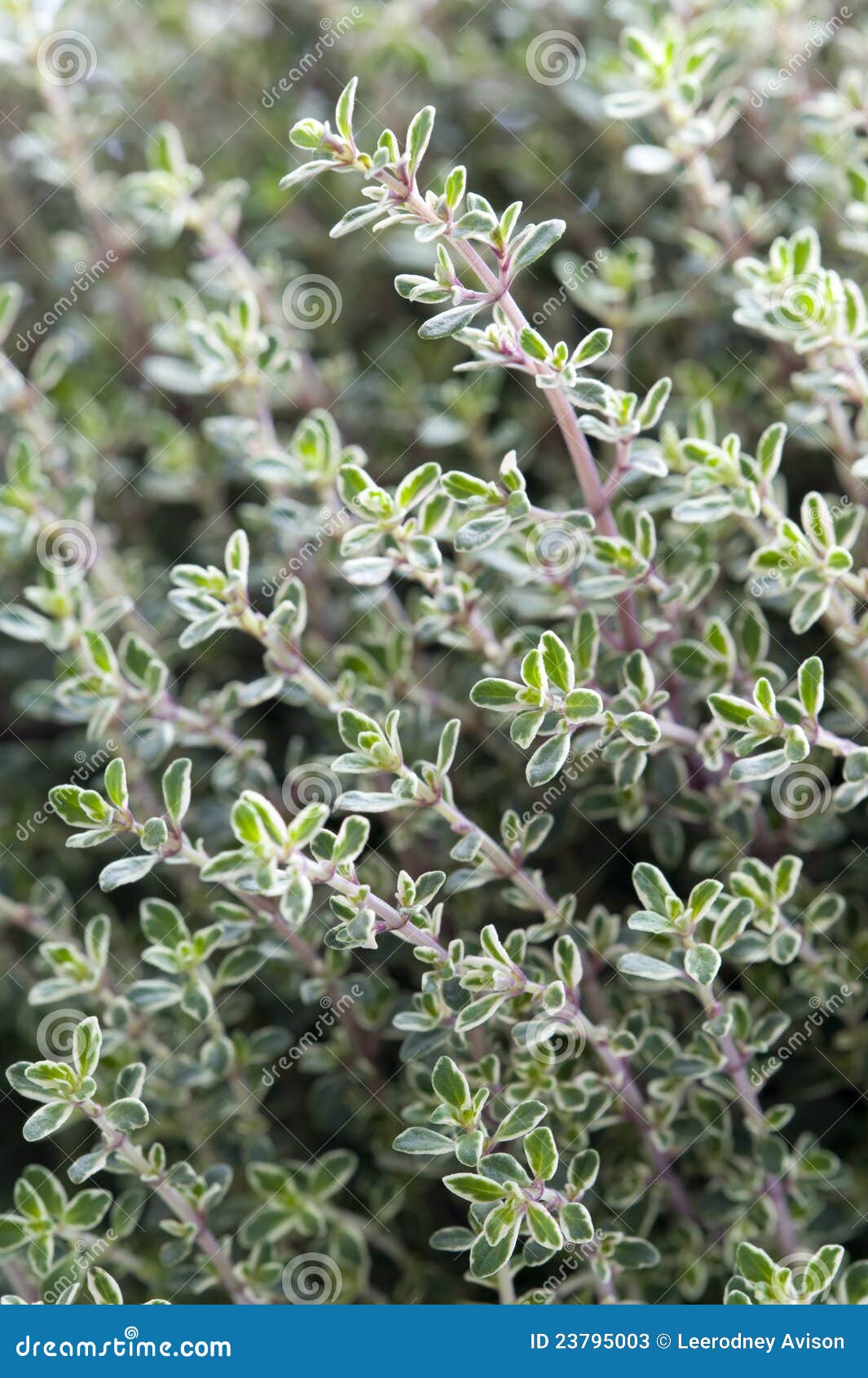
Thyme often is used in marinades, meat dishes, casseroles, stews, herb butters, and vegetable dishes. Fresh or dried leaves can be used in cooking. The flavor of thyme blends well with lemon, garlic, and basil. Thyme also can be used as an edging or border plant in herb gardens. Creeping thyme will tolerate occasional foot traffic and can be used between stepping stones along garden paths. Sunny windowsills are also great locations for containerized thyme. Only a few thyme species are used as landscape ornamentals. Thyme is easy to propagate from seed, cuttings, and division. Generally, prostrate forms of thyme overwinter better in Iowa than upright types. Cutting plants back will help them recover. Thyme is hardy in USDA Hardiness Zones 5-9, but can "melt out," or decline, during hot, humid summers. Plants used for culinary purposes should be replaced every few years to prevent the development of any undesirable, woody growth. Thyme should not be fertilized heavily because over-fertilized plants will become tall, spindly, and weak. Thyme can develop root rot and is susceptible to fungal diseases if grown in wet soils. In fact, most thyme species do best in coarse, gritty soils that would be unsuitable for many other plants.
#GROWING THYME FULL#
The flowers are very attractive to bees, and the honey made from thyme-fed bees is considered a culinary delicacy.Īll species of thyme prefer full sun and a well-drained soil. Flowers usually are lavender, red, or white depending on the cultivar. Flowers also sometimes form in the leaf axils of the plant. The tubular-shaped flowers occur in dense, terminal clusters and blanket plants in summer. It also is highly aromatic with each species having a slightly different scent.

Thyme leaves are small, usually 1/2 inch or less in diameter and oval to oblong in shape. Thyme has both prostrate and upright habits. Thyme is a semi-evergreen groundcover that rarely grows more than 15 inches tall. Thyme has been valued throughout history for its fragrance, flavor, and ornamental value. The genus Thymus contains more than 300 different species and is in the mint family (Lamiaceae). Here are more details on growing, harvesting, and using thyme.Thyme ( Thymus spp.) has been cultivated for many centuries. I love this 12-herb set of non-GMO seeds, which includes thyme, or try an heirloom variety. Plus, you can be sure your plants were grown without chemicals. However, if you’re short on cash and don’t want to buy seedlings, growing from seed is easy. Ready to get growing?Īs a perennial herb, starting it from seed is a slow practice. The roots have a deep, fibrous growth habit that is perfect for growing on erosion-prone slopes. Imagine my surprise when I dug it up and discovered its 2-foot-deep roots (see picture above)! I decided to move a one-year-old plant to a different part of the garden. Recently, I discovered how this herb can reduce erosion quite by accident!

Reducing soil erosion is an important goal in our gardens and landscapes, since we export 3 tons of topsoil per acre per year in America alone. Mmmm.įor something different, try making calendula and thyme shortbread cookies or black cherry preserves with thyme. It is popularly used in a dried poultry herb blend or in herbes de provence seasoning blend. This mediterranean herb can be used both fresh and dried in the kitchen. Would you like to grow food in your front yard without sacrificing curb appeal? Check out my mini guide, The Permaculture Inspired Edible Landscape.
#GROWING THYME SKIN#
Or try making your own thyme infused oil (from Herbal Academy), which can be used as a culinary oil in the kitchen, directly on the skin as a moisturizer or disinfecting ointment, or in a salve.įor all of these reasons, it is one of my favorite herbs to grow in the medicine garden. You can buy the essential oil or look for natural products with the active ingredient thymol in it. It is also a strong antiseptic for cuts, scrapes, acne or sore muscles. Check out my sage and thyme elixir, which is easy to make at home. As an antiviral herb, it is especially helpful with common cold symptoms, coughs, and bronchial infections. Otherwise, cut the woody stems back by half each fall. Harvest it often to keep it naturally pruned. I gravitate toward plants that don’t need much attention, how about you? The following are some of the benefits you’ll get from growing it in your herb garden. Whether you like creeping thyme, common (English) thyme, lemon thyme or French thyme, you will find a variety to suit your needs. This mediterranean plant is in the mint family. But that’s not all! Check out these six reasons to grow thyme in your herb garden. Thyme is a valuable herb with culinary and medicinal benefits.


 0 kommentar(er)
0 kommentar(er)
